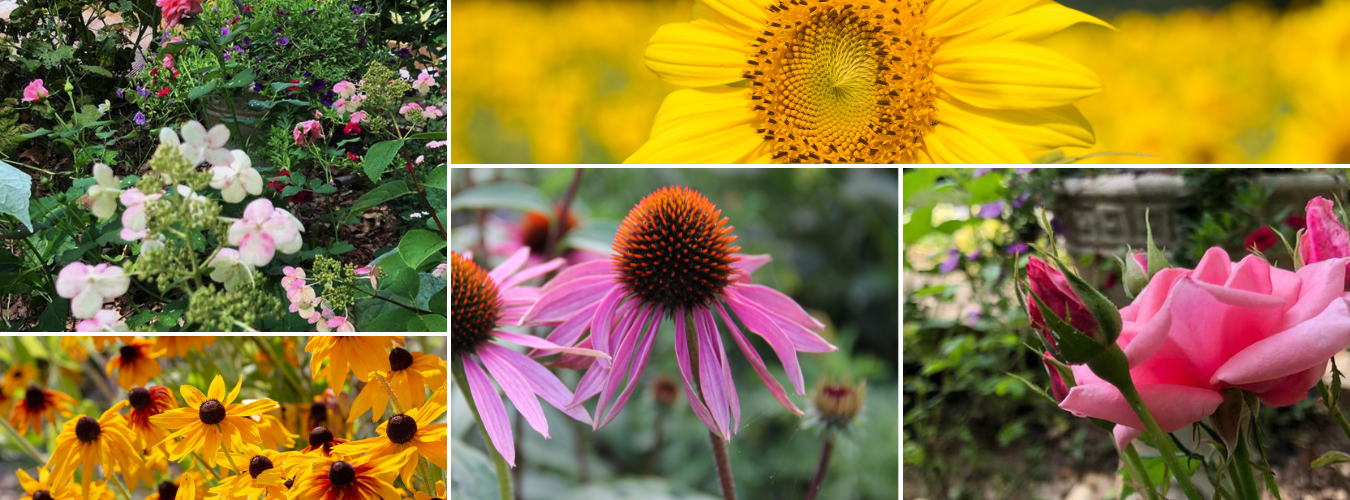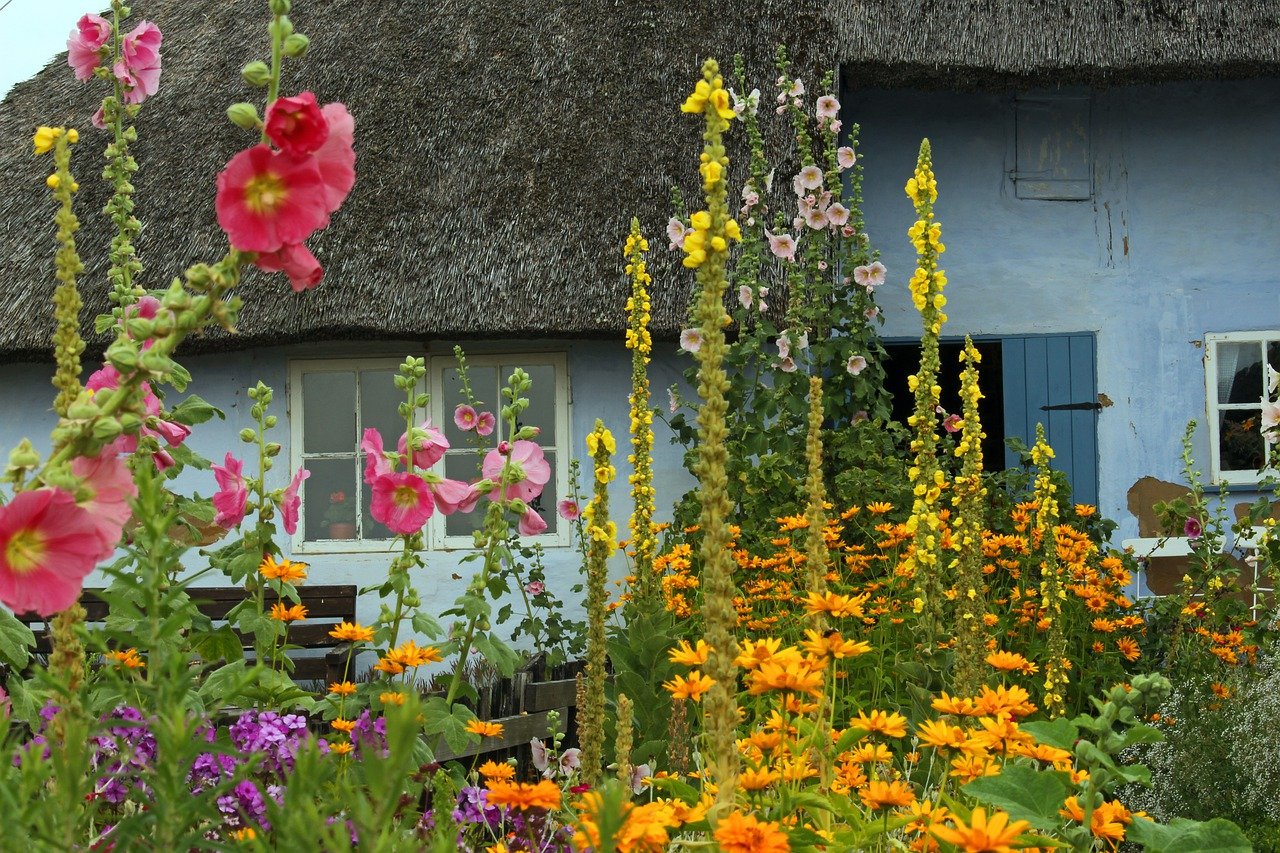While it might seem that it isn’t important, understanding your soil’s PH level is very important, and I have discovered that most cottage garden flowering plants need soil that is more on the alkaline side of the spectrum.

Alyssum
“Lobularia maritima syn. Alyssum maritimum, common name sweet alyssum or sweet alison, also commonly referred to as just alyssum (from the genus Alyssum in which it was formerly classified) is a species of low-growing flowering plant in the family Brassicaceae…. It will flower more profusely if spent blooms are trimmed. When grown in gardens, it is typically used as groundcover, as it rarely grows higher than 20 cm (8 in) tall. It is also grown in cracks in paving and walls, and is especially associated with coastal locations. It prefers partial shade, and is resistant to heat and drought. Plants with darker-colored flowers do better in cooler temperatures.” From Wikipedia

Anemone – Wind Flower
“These plants thrive best in shady areas and under protection of larger plants, and in all but the hottest and the driest conditions in the United States.[3] They are especially sensitive to drought or overwatering.” From Wikipedia
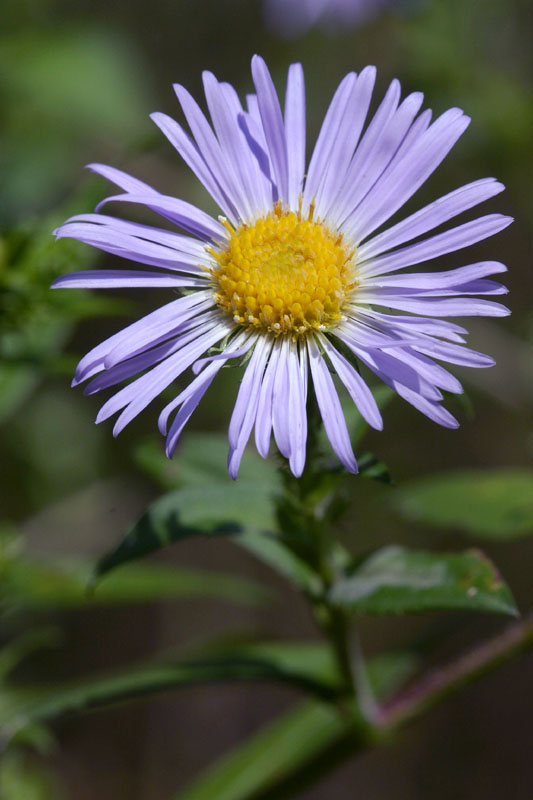
New England Aster – Michaelmas Daisy

Bachelor’s Button – Centaurea – Cornflower

Balloon Flower – Plantycodon
Balloon Flowers can also bloom in neutral and acidic soil.
Baptisia – Wild Indigo
Grows to a Height of 4′

Bee Balm – Monarda

Bellflower – Campanula
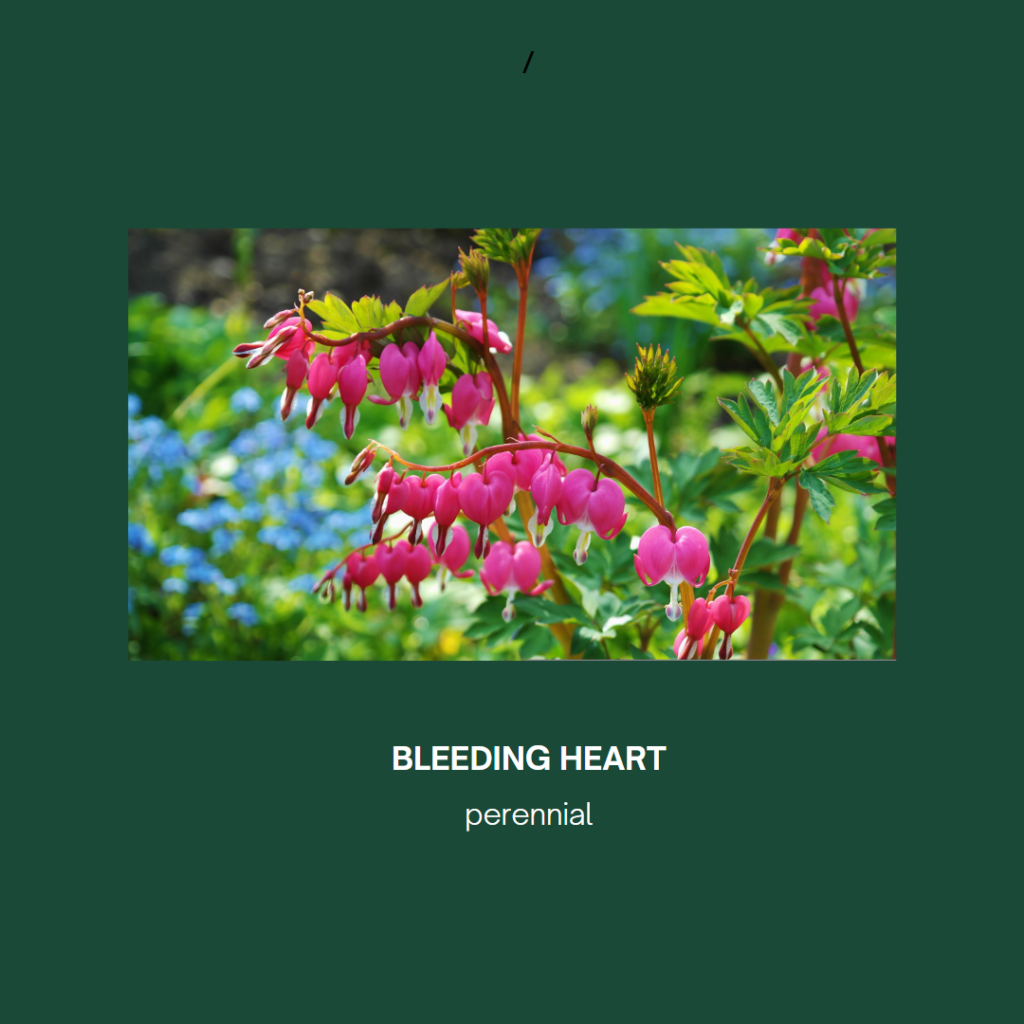
Bleeding Heart – Dicentra – Dutchman’s Breeches
In a moist and cool climate, it will grow in full sun, but in warmer and drier climates it requires some shade.
Aphids, slugs and snails sometimes feed on the leaves.
Clumps remain compact for many years and do not need dividing. They have brittle roots which are easily damaged when disturbed. Root cuttings should be taken in spring. From Wikipedia
Catnip

Showy periwinkle blue flower spikes adorn the fragrant mounds of gray-green foliage. Excellent for cascading off walls or container edges and as groundcover that is somewhat drought resistant with time. Attracts hummingbirds and butterflies. Herbaceous
Reaches 24-30 in. tall, spreading to 36 in. wide

Coneflower – Echinacea
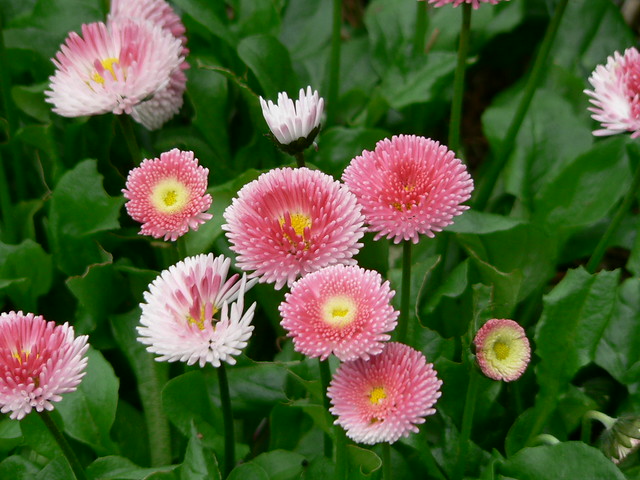
English Daisy
English Daisy is a short plant that can be grown as a groundcover.
It can be grown in soil of almost any ph level.

Cosmos

Crocus

Dahlia

Delphiniums

Dianthus [Including Carnations & Sweet Williams]

Forsythia

Foxgloves

Geranium [Hardy] Cranesbill

Hibiscus Fireball [Hardy] – Jacki Kellum Garden 2015

Hollyhocks
Honeysuckle – ph from 6.1 – 7.8
Hyacinth

Iris

Lilac

Marigolds

Morning Glory

Peony

Petunias

Phlox

Poppy
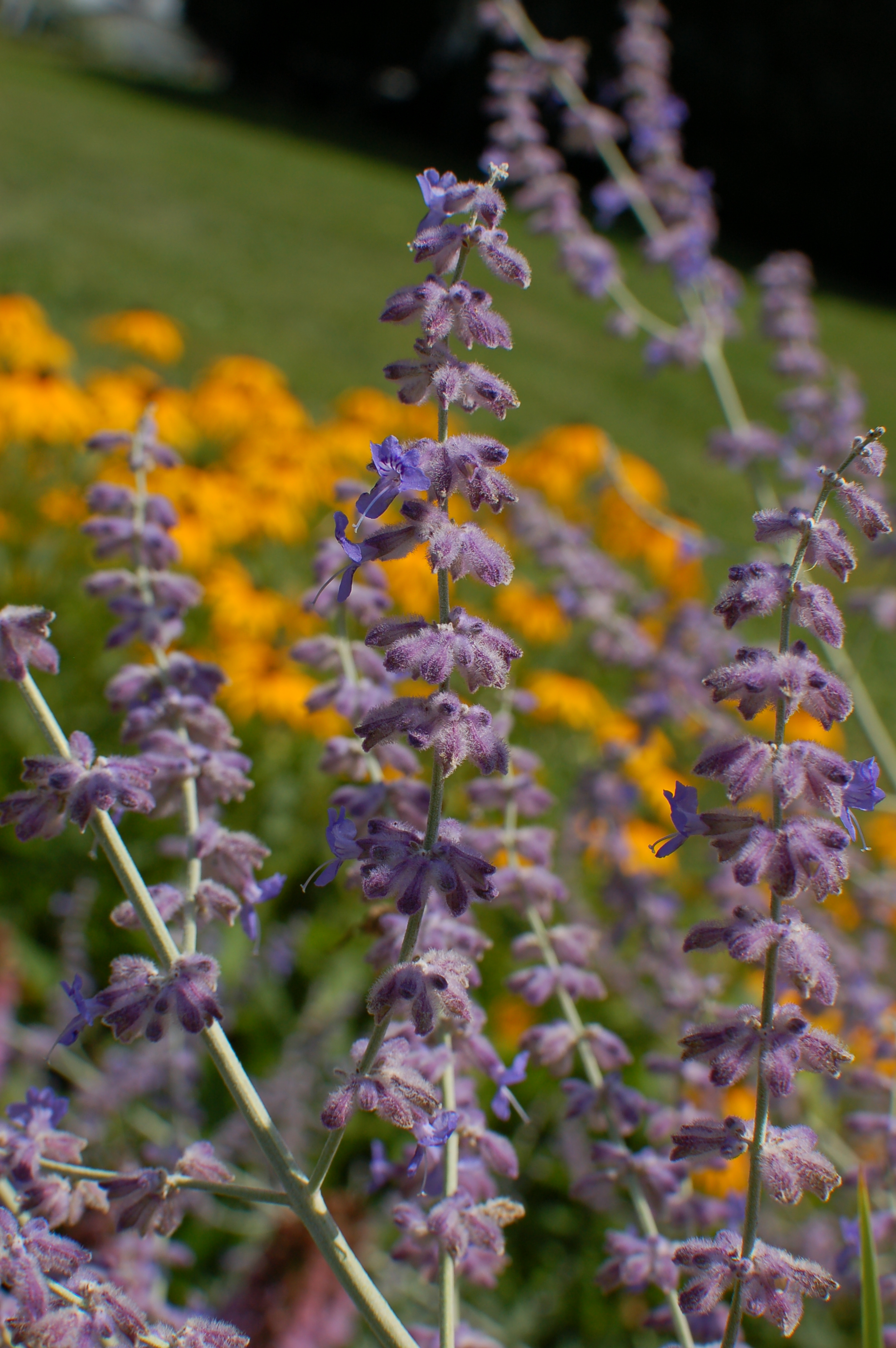
Russian Sage

Speedwell
 Jacki Kellum Garden July 2021
Jacki Kellum Garden July 2021
I grow several kinds of speedwell plants. In the above photo, you both my veronica speedwell, which is blue and my Perfectly Picasso, which is a darker pink.
I also grow Moody Blues Speedwell, which more pink than blue.

Sunflower

Sweet Peas
How to Adjust Your Soil’s PH Level
Method 1 of 2: Increase the pH by adding Lime
http://www.wikihow.com/Adjust-Soil-pH
Select your lime source depending on the needs of your plant. Some lime sources contain micronutrients like dolomite, which is a mixture of calcium and magnesium carbonates. Wood ashes also provide lime with the addition of other micronutrients including potassium, phosphate, boron and other elements. Standard lime comes in 4 types of ground limestone forms: pulverized, hydrated, granules and pellets.
